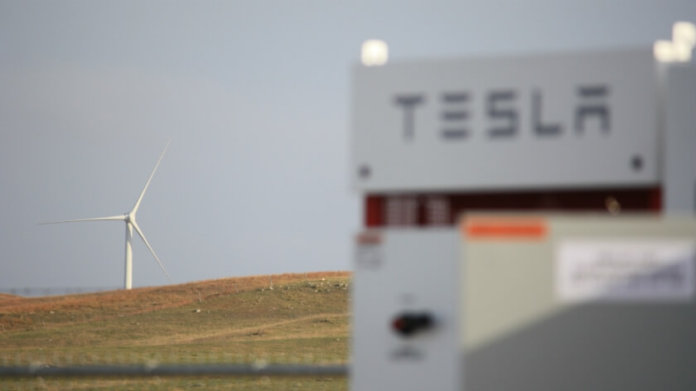BP has installed a Tesla energy storage solution at its 25 MW Titan 1 Wind Energy site in South Dakota, representing a first for BP’s U.S.-operated wind business.
According to BP, the technology is expected to improve energy efficiency at the site and help address the intermittency of wind power by storing surplus electricity that can be used to meet consumer demand when the wind is not blowing.
The 212 kW/840 kWh battery storage system was designed, manufactured and installed by Tesla, using the company’s Powerpack battery system to store and discharge energy when needed.
“As renewables form a bigger part of the energy mix, storage systems like this one will become increasingly important,” says Dev Sanyal, CEO of BP’s global alternative energy business. “This project will help us develop new business models around the integration of renewables, battery storage and other forms of energy, and it underscores our commitment to being a part of the transition to a lower-carbon future.”
Announced earlier this year, the project is the first of its kind at a site wholly owned and operated by BP Wind Energy, as well as the first combined wind and battery project in the Southwest Power Pool, according to BP.
“Battery storage solutions are a proven proposition for storing energy and balancing out the intermittent and variable output of renewable energy sources,” says Laura Folse, CEO of BP Wind Energy. “Insights from this project will enable BP to make better-informed decisions when evaluating and developing battery applications in the future, as well as help us to create a wind energy business that is sustainable for the long term.”
In the U.S., BP directly operates 13 wind energy sites in Colorado, Idaho, Indiana, Kansas, Pennsylvania, South Dakota and Texas and holds an interest in a separate wind facility in Hawaii. The company’s U.S. wind energy sites have a gross generating capacity of 2,259 MW.





What is the cost versus value of this comparatively small amount of storage? What is the actual purpose of being able to store an hour’s worth of output of a single turbine, for an entire windfarm? Is this a really small windfarm? It seems like this amount of storage is too small for anything but (maybe) smoothing output on a minute-by-minute basis, yet the cost must be astronomical. 212 kW is enough to power maybe 100 homes? So how does that really “meet consumer demand when the wind is not blowing”? Wish we had more actual info on the specific… Read more »